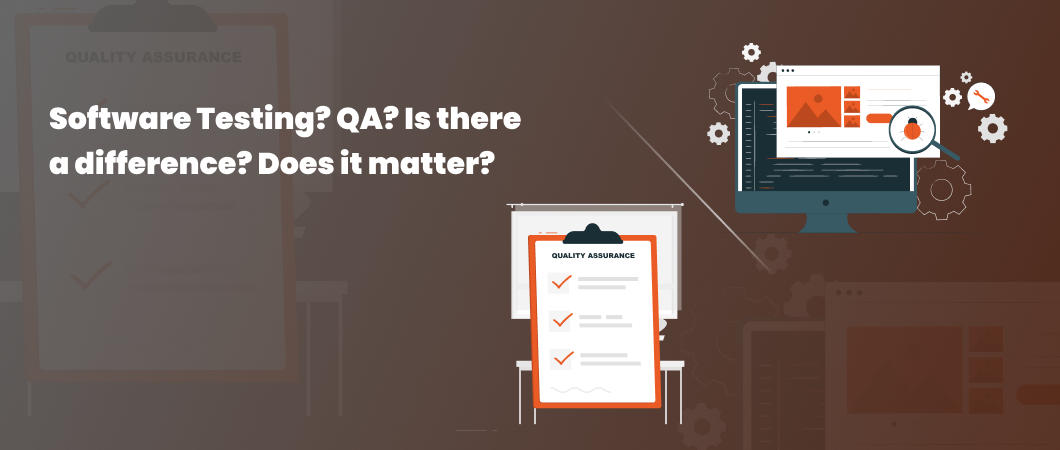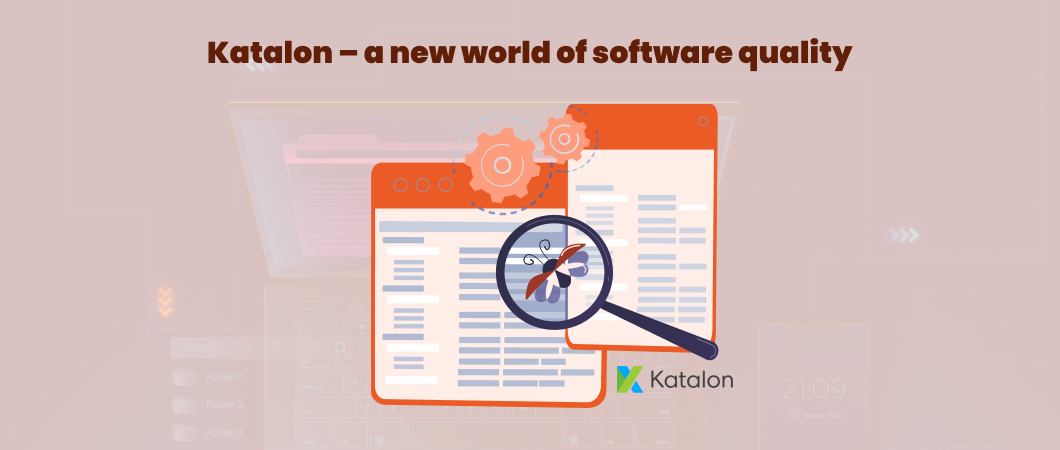“As ironic as it seems, the challenge of a tester is to test as little as possible. Test less, but test smarter.” Federico Toledo.
In some ways, delivering software is becoming harder by the day with restricted budgets, multiple platforms, complex functionality, and stringent timelines, In this situation, Test Automation has emerged as a key component to help software achieve their delivery goals, while still hitting quality targets. Test automation does not guarantee a perfect defect-free app but allows developers to identify issues faster as compared to manual testing. This time saved could be put to use for increased code coverage or to crash delivery times. There are several automation tools that are available in the market which companies can strategically and effectively adapt but here are a few top-notch tools in the field of automation testing which are proven in today’s competitive world.
 Appium – An open-source tool, this is among the most preferred and widely adopted tools in the world of mobile application automation testing. It supports automation testing of all the three types of mobile applications: native, hybrid, and mobile web. Appium has some key features which include the ability to support automated tests on physical devices, simulators, and emulators. Moreover, this tool has no problems supporting all the popular mobile operating systems in the market. Be it iOS or Android, this tool runs automation tests flawlessly thereby having cross-platform automation testing capability. This eliminates the need for separate platform-dependent frameworks and helps in reducing the overall effort and cost. Another notable feature is that Appium can easily access backend APIs or databases from test code. Further, it allows flexibility in the programming language in which the test is designed as it is not tightly coupled with the framework or programming language to be used.
Appium – An open-source tool, this is among the most preferred and widely adopted tools in the world of mobile application automation testing. It supports automation testing of all the three types of mobile applications: native, hybrid, and mobile web. Appium has some key features which include the ability to support automated tests on physical devices, simulators, and emulators. Moreover, this tool has no problems supporting all the popular mobile operating systems in the market. Be it iOS or Android, this tool runs automation tests flawlessly thereby having cross-platform automation testing capability. This eliminates the need for separate platform-dependent frameworks and helps in reducing the overall effort and cost. Another notable feature is that Appium can easily access backend APIs or databases from test code. Further, it allows flexibility in the programming language in which the test is designed as it is not tightly coupled with the framework or programming language to be used.
 Selenium – Selenium is a browser automation tool which is widely used for automation testing of web applications. Selenium has eventually matured into a full-fledged test automation framework named Selenium 2.0 or Selenium Webdriver, post the Google test automation conference in 2009. Selenium test scripts are written in Selenese. The executing, recording, and editing is supported by the Selenium Integrated Development Environment (IDE). Selenium Remote Control (RC) is a server which executes the commands generated from a browser via HTTP. Again, RC supports automated tests in any programming language which leads to ease in integration. Selenium Webdriver is the next step to Selenium RC. It does not need its specific server to execute the tests, rather it initiates a browser instance and uses it. Selenium grid goes a level further by supporting remote web browsers instances.
Selenium – Selenium is a browser automation tool which is widely used for automation testing of web applications. Selenium has eventually matured into a full-fledged test automation framework named Selenium 2.0 or Selenium Webdriver, post the Google test automation conference in 2009. Selenium test scripts are written in Selenese. The executing, recording, and editing is supported by the Selenium Integrated Development Environment (IDE). Selenium Remote Control (RC) is a server which executes the commands generated from a browser via HTTP. Again, RC supports automated tests in any programming language which leads to ease in integration. Selenium Webdriver is the next step to Selenium RC. It does not need its specific server to execute the tests, rather it initiates a browser instance and uses it. Selenium grid goes a level further by supporting remote web browsers instances.
 Loadrunner – Load testing is a methodology to gauge the performance of any application, website, or mobile app to ensure that once the software is live, high traffic does not impact or degrade the performance and in turn lead to a poor end-user experience. Loadrunner which is a part of the Hewlett-Packard Enterprise product suite is one of the most widely used tools in the performance testing arena. Loadrunner’s interactive test scripting, recording, and executing features had made it the top choice for many performance test engineers. 1000’s of engineers around the world use it, as it has a key analytics feature which helps to identify the performance bottlenecks by accessing the application layer and data.
Loadrunner – Load testing is a methodology to gauge the performance of any application, website, or mobile app to ensure that once the software is live, high traffic does not impact or degrade the performance and in turn lead to a poor end-user experience. Loadrunner which is a part of the Hewlett-Packard Enterprise product suite is one of the most widely used tools in the performance testing arena. Loadrunner’s interactive test scripting, recording, and executing features had made it the top choice for many performance test engineers. 1000’s of engineers around the world use it, as it has a key analytics feature which helps to identify the performance bottlenecks by accessing the application layer and data.
 Jenkins – Jenkins is an open-source tool developed in Java which can be used for continuous integration. Jenkins is a part of the Hudson project which was released in February 2005 by Sun Microsystems. It can be easily integrated with multiple software configuration management tools. With the capability of using plugins, Jenkins can cater to automation capabilities in several areas like source code management, triggers, wrappers, notifiers and reports, external tool integration, iOS, .NET and Android development, etc. Based on the principle of Continuous Integration, deployment, and delivery, Jenkins primarily helps in faster and accurate build and deployment, thereby reducing the overall time for end-to-end delivery.
Jenkins – Jenkins is an open-source tool developed in Java which can be used for continuous integration. Jenkins is a part of the Hudson project which was released in February 2005 by Sun Microsystems. It can be easily integrated with multiple software configuration management tools. With the capability of using plugins, Jenkins can cater to automation capabilities in several areas like source code management, triggers, wrappers, notifiers and reports, external tool integration, iOS, .NET and Android development, etc. Based on the principle of Continuous Integration, deployment, and delivery, Jenkins primarily helps in faster and accurate build and deployment, thereby reducing the overall time for end-to-end delivery.
 Junit – Test-driven development involves running repeated unit test cases on a source code to identify any issues at an early stage in the delivery cycle. In a nutshell, the tests are designed first and the code is considered fine if it passes the tests. One of the most preferred frameworks for test-driven development is Junit which is primarily used by Java programmers. Junit can be implemented fairly quickly as it is less complex and automating the Junit tests can provide a fast response for the tests executed. Junit test cases are often organized into a Junit test suite, which enables executing the specific test suite and thereby all the test cases together. Several other frameworks like TestNG have been inspired by the concepts of Junit and Nunit.
Junit – Test-driven development involves running repeated unit test cases on a source code to identify any issues at an early stage in the delivery cycle. In a nutshell, the tests are designed first and the code is considered fine if it passes the tests. One of the most preferred frameworks for test-driven development is Junit which is primarily used by Java programmers. Junit can be implemented fairly quickly as it is less complex and automating the Junit tests can provide a fast response for the tests executed. Junit test cases are often organized into a Junit test suite, which enables executing the specific test suite and thereby all the test cases together. Several other frameworks like TestNG have been inspired by the concepts of Junit and Nunit.
Adding test automation into the testing process as a cycle booster, that is it can be used to generate more time for critical manual testing. This also means that test automation is not intended to replace manual testing, but rather to complement it in a comprehensive test strategy to ensure that the highest-quality product goes out the door in the shortest possible time. As James Bach is reported to have said, “Automation does not do what testers used to do unless one ignores most things a tester really does. Automated testing is useful for extending the reach of the testers work, not to replace it.



